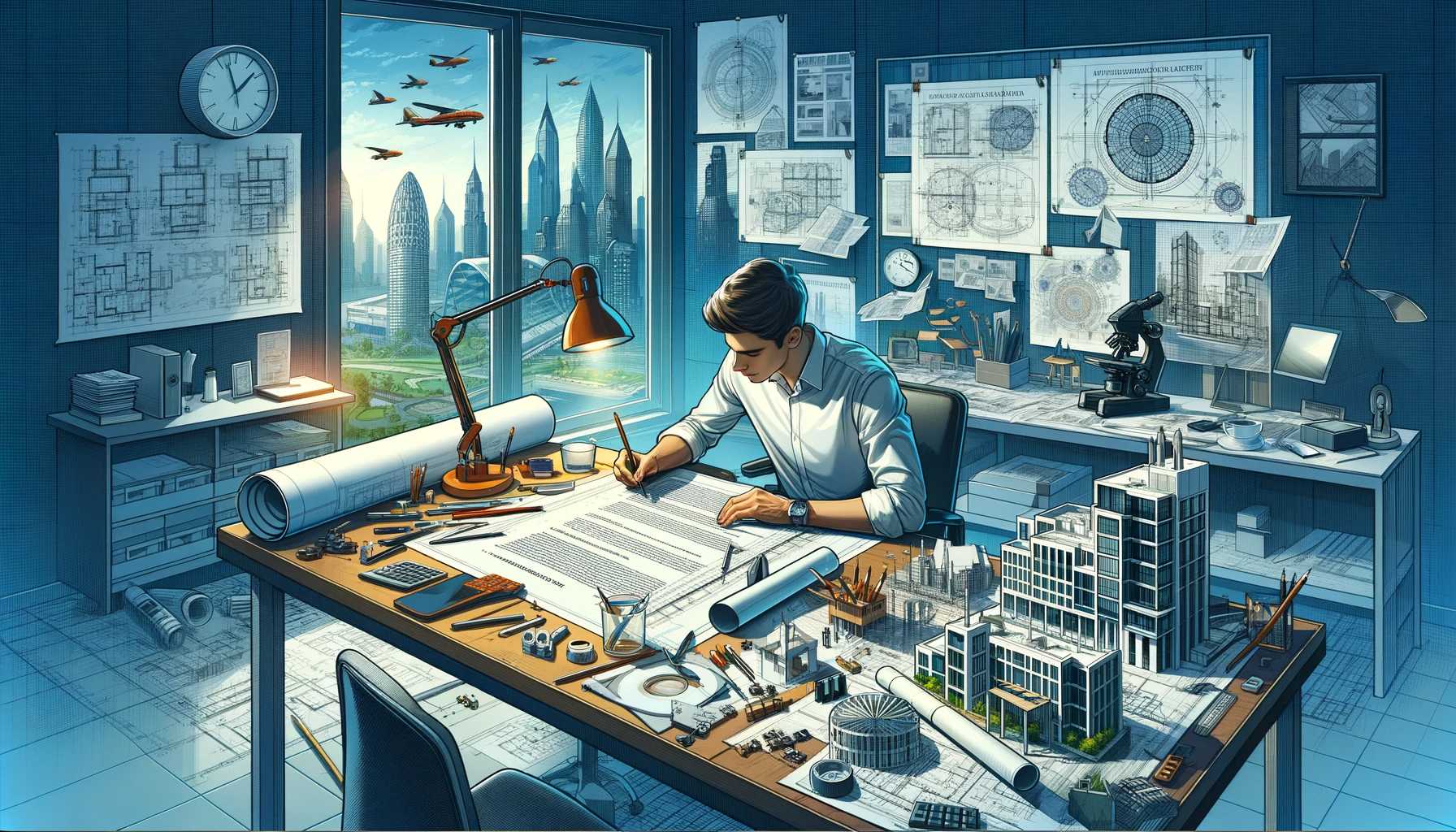Architectural Success: The Art of Writing an Exceptional Cover Letter
Introduction:
Hello aspiring architects and design enthusiasts! Today, let's explore a crucial aspect of your career journey – the architecture cover letter. Just as every structure needs a solid foundation, your job application requires a well-crafted introduction. In this blog post, we'll delve into the intricacies of writing an exceptional architecture cover letter. From showcasing your passion to highlighting your unique skills, let's embark on the journey of articulating your professional narrative with finesse and flair.
1. The Architectural Blueprint: Understanding the Basics
Before we dive into the creative realm, let's establish the fundamental structure of an architecture cover letter. Much like a blueprint, your letter should have a clear and organized layout. Start with a salutation, introduce yourself, express your interest in the position, elaborate on your qualifications, and conclude with a call to action. Keep it concise, typically not exceeding one page, and ensure a professional tone throughout.
2. The Art of Personalization: Addressing the Right Audience
Begin your cover letter by addressing the hiring manager or the designated contact person. Avoid generic greetings like "To Whom It May Concern." Personalization adds a touch of sincerity and demonstrates that you've invested time in researching the company. If possible, mention a specific project or aspect of the firm that resonates with you, showcasing your genuine interest.
3. The Grand Entrance: Crafting a Compelling Opening Paragraph
Your opening paragraph is the grand entrance to your architectural narrative. Capture the reader's attention with a compelling statement. Consider sharing a brief anecdote about what ignited your passion for architecture or how a specific project inspired you. This personal touch sets the tone for the rest of the letter, making it memorable and engaging.
4. The Showcase: Highlighting Your Unique Skills and Qualifications
Now, let's move on to the core of your cover letter – showcasing your skills and qualifications. Instead of reiterating what's already in your resume, use this space to delve deeper into your experiences. Pick a few key projects or achievements that align with the firm's values or current needs. Describe your role, contributions, and the impact you made. Be specific and quantify your achievements whenever possible.
5. The Design Process: Demonstrating Your Approach
Architecture is not just about buildings; it's a design process rooted in problem-solving. Illustrate your approach to design challenges and problem-solving in your cover letter. Discuss your methodologies, collaboration techniques, and how you integrate creativity with functionality. This insight gives the reader a glimpse into your mindset and demonstrates your ability to navigate complex projects.
6. The Materials Palette: Showcasing Your Knowledge of the Firm
Just as architects carefully choose materials for their projects, showcase your knowledge of the firm you're applying to. Discuss why you are drawn to their work, their design philosophy, or a specific project that resonates with you. This demonstrates your genuine interest and makes your cover letter more compelling and relevant to the hiring firm.
7. The Collaborative Foundation: Emphasizing Teamwork and Communication Skills
Architecture is a collaborative field, and effective communication is paramount. Emphasize your ability to work within a team, collaborate with diverse professionals, and communicate complex ideas clearly. Share instances where your teamwork and communication skills played a pivotal role in the success of a project. This not only showcases your professional acumen but also highlights your interpersonal strengths.
8. The Green Building: Highlighting Your Commitment to Sustainability
Sustainability is a cornerstone in modern architecture. If you have experience or a passion for sustainable design, make it a focal point in your cover letter. Discuss any LEED certifications, green building initiatives, or projects where sustainability played a significant role. Your commitment to environmentally conscious design adds a valuable dimension to your profile.
9. The Architectural Language: Craft Your Writing with Precision
In the field of architecture, precision is key. Apply the same principle to your writing. Ensure that your cover letter is free of grammatical errors, typos, and awkward phrasing. Use concise and clear language to convey your thoughts. A well-crafted letter reflects your attention to detail, a quality highly valued in the architectural profession.
10. The Grand Finale: Closing with Conviction and a Call to Action
As you approach the conclusion of your cover letter, restate your enthusiasm for the position and express your eagerness to contribute to the firm's success. End with a strong closing statement that leaves a lasting impression. Consider a call to action, such as expressing your hope for an interview to discuss how your skills align with the firm's vision. It adds a proactive touch and signals your genuine interest in moving forward in the hiring process.
11. The Portfolio Teaser: Encouraging a Glimpse into Your Work
While your cover letter is a narrative, your portfolio is the visual counterpart. Encourage the hiring manager to delve into your portfolio for a more comprehensive understanding of your work. Include a line inviting them to explore your portfolio for a visual representation of your design expertise. This adds an interactive dimension to your application.
12. The Final Edit: Review and Refinement
Before you send off your cover letter, conduct a thorough review. Check for grammar, clarity, and coherence. It's also helpful to have a colleague or mentor review it for an external perspective. Ensure that your letter aligns with the job description and addresses any specific requirements mentioned in the job posting. Your cover letter is your professional introduction, so make sure it reflects your best self.
Conclusion: Your Architectural Narrative Unveiled
In the intricate tapestry of your architectural career, the cover letter serves as the thread that weaves your narrative into the fabric of the firm you aspire to join. Each word is a brushstroke, painting a vivid picture of your passion, skills, and unique approach to design. So, as you embark on this journey of self-expression, may your cover letter be a masterpiece that resonates with the architects of your future. Happy writing!









